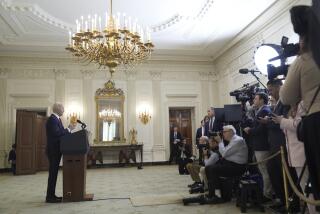Indispensable Old Media
OVER THE WEEKEND, at almost the same time that the world was informed that Google was vying to pay $1.65 billion for YouTube, a 2-year-old video-sharing website, famed Russian journalist Anna Politkovskaya was gunned down in Moscow. Politkovskaya covered human rights abuses in Chechnya. She was also a vocal critic of Russian President Vladimir V. Putin, and Russian authorities consider her death a political assassination.
YouTube’s acquisition and Politkovskaya’s killing are unrelated events. Yet both offer powerful clues about the forces shaping the way information is produced, distributed and consumed in today’s world. YouTube epitomizes “new media” — their immense potential and surprising effects. Politkovskaya represents “old media” — their literal struggle for survival and also their historical, indeed indispensable, value.
There is no doubt that new technologies are changing the way all of us get and understand information. The trend is toward actively “searching” for what one wants to watch, read or listen to rather than passively taking in whatever editors or producers select.
The fascination with the transformational effect of all this makes it easy to forget what is essential to the information process: traditional “old media” messengers such as Anna Politkovskaya. Or the two German journalists killed in Afghanistan the same day. Or their 75 colleagues who have died so far this year in 21 countries, and the 58 who died last year, according to the Paris-based World Assn. of Newspapers.
Some of the journalists who died were caught in the crossfire of ferocious wars; others were hunted down to prevent their stories from being told. Twenty-six journalists and media assistants (camera operators, sound recordists and others) have died in Iraq so far this year — such as Hadi Anawi Joubouri, a reporter and representative of the Iraqi Journalists Syndicate in the province of Diyala who was shot and killed last month on a road north of Baghdad.
But journalists are not just being routinely killed in Iraq or by terrorists. Investigative reporters who expose corrupt politicians, organized crime or the astonishing power of illicit traffickers of people, drugs or weapons are regularly murdered.
So far this year, journalists have been killed in 21 countries. In the Dominican Republic, Facundo Labata, who reported on drug trafficking, was shot while playing dominos in Santo Domingo. In Sudan, the beheaded body of Mohammed Taha Mohammed Ahmed, the editor of the Sudanese newspaper Al Wifaq, was found on the outskirts of the capital, Khartoum. He was tried last year for reprinting an article deemed to be blasphemous. Ogulsapar Muradova, a correspondent for Radio Free Europe/Radio Liberty accused of (among other things) smearing the reputation of Turkmenistan, died while in custody in that country. Her children described marks on her neck and a “large wound” on her head.
Like the slaying of Politkovskaya, these killings illustrate that it is the messenger that matters. Insurgents, criminals, terrorists and corrupt politicians understand very well that it is the months or years of digging by professional reporters, many of them supported by traditional news organizations, that will expose misdeeds.
Of course, new technologies expand the ways in which media can provide public service and, at times, also amplify the effect of the professional investigative reporters. Ask Londoners about the political power of cellphone pictures of the terrorist subway and bus bombings uploaded to the photo-sharing site Flickr, or ask residents of New Orleans about the power of blogs covering the failed relief efforts after Hurricane Katrina, or ask Sen. George Allen (R-Va.) about the half-life of remarks broadcast via YouTube that many deemed racist.
IT IS HARDER TO quash the millions of citizen-journalists armed with photos and videos and blogs than it is to silence a single, bothersome reporter such as Politkovskaya. Yet her investigations and the work of the other professionals provide the unambiguous evidence and credible “content” — documents, sources, doggedly checked and rechecked details — we desperately need for a functioning, civilized, democratic and ultimately free society.
The Nobel committee, which will announce its peace prize this week, has commissioned a report on the link between peace and news coverage. “Good news coverage can be essential to peace,” Geir Lundestad, the secretary of the committee, has said. “Accurate information can often reduce conflict.”
YouTube, Google, Flickr and many other websites offer valuable tools for keeping the world informed. But they are not a substitute for Politkovskaya and her colleagues.
Societies are judged on how they treat their most vulnerable citizens. We suggest that added to that calculation should be whether journalists have been threatened, assaulted and killed. Tell us how many journalists were assassinated in your country last year, and we will tell you what kind of society you have.
Susan Moeller is director of the International Center for Media and the Public Agenda at the University of Maryland. Moisés Naím is editor-in-chief of Foreign Policy magazine and the author of “Illicit: How Smugglers, Traffickers and Copycats Are Hijacking the Global Economy.”
More to Read
Sign up for Essential California
The most important California stories and recommendations in your inbox every morning.
You may occasionally receive promotional content from the Los Angeles Times.










